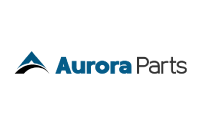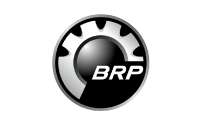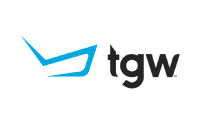


Big Rock Sports Implements New WMS for Greater Efficiency and Scalability
Big Rock Sports leverages enVista’s WMS implementation services to improve inventory and picking accuracy and lower labor costs.



Big Rock Sports leverages enVista’s WMS implementation services to improve inventory and picking accuracy and lower labor costs.



Sock and legwear manufacturer reduces inventory costs and significantly improves service levels with enVista’s S&OP strategy program.



Make the most of Microsoft Dynamics 365’s Advanced Warehousing module and gain insight into the hidden treasures to unlock value.



Learn about supply chain execution and how supply chain execution software can help your company streamline processes and lower costs.



Gain insight into strategic vs. tactical sourcing and how placing transportation procurement into these categories can reduce the complexity.







































Lorem ipsum dolor sit amet, consectetur adipiscing elit. Ut elit tellus, luctus nec ullamcorper mattis, pulvinar dapibus leo.
With solid, proven methodologies and the right modeling tools, enVista is an expert resource for solving complex supply chain network challenges for the long term. We work with a broad range of industry verticals, and while specific industry challenges differ, many of the variables impacting network design remain the same.
Reductions in inventory, operational efficiencies, and transportation savings are key areas of savings for our customers.
enVista leverages proprietary modeling techniques and end-to-end supply chain analysis to design the highest performing supply chains in the industry.
From re-rating ecommerce shipments to optimizing route deliver to benchmarking inbound intermodal freight, enVista’s experienced transportation strategy team provides the financial and execution plan to drive network strategy.
enVista’s goal is to provide a network design that, when implemented, is simple to operate. enVista reviews supporting supply chain planning and executions systems to ensure our customers can execute the supply chain as designed.
enVista improves services levels through inventory positioning, and we specialize in designing micro-fulfillment centers applications as well as multi-echelon supply chain networks.
enVista’s analysis focuses on inventory flow throughout the supply chain as it moves between nodes and through distribution centers. Our focus is to reduce cycle times through lean operations analysis.









A well-thought-out slotting strategy also enables businesses to minimize wasted space and maximize storage capacity within the warehouse. Increase ROI using the right tools, strategy and management plan with successful warehouse slotting.



Discover how innovative technologies can drive operational efficiencies and enable scalability during hyper-growth. Learn how enVista’s strategic guidance, agile implementation and continuous support empower organizations to navigate complexities and achieve sustainable growth.



enVista guided international medical device company through a robust WMS selection and played a pivotal role during WMS implementation.



Embracing the integration of food traceability and inventory visibility ensures regulatory compliance, enhances brand reputation and lays the foundation for a resilient and responsive supply chain ecosystem in the face of future challenges.
Supply chain network optimization is the process of creating an overview of an organization’s supply chain. This process can take different forms, but it most often involves creating a model replica of the supply chain and visuals of all transactions within the supply chain. This model allows organizations to examine and evaluate different parts of supply chains with an end-to-end view. The information gleaned from this exercise can then be used to lower supply chain costs, create better demand forecasts and optimize processes across the supply chain. The supply chain optimization process can involve using anything from simple technology to advanced supply chain network software, depending on the organization and complexity of the supply chain being examined.
Supply chain network design is an analytical process that helps companies determine the optimal combination of suppliers, manufacturers, facilities and products using mathematical modeling. This process helps eliminate a lot of the issues that arise during the growth process of a typical organization.
The process starts with determining an organization’s main business goals, such as plans for expansion, specific financial goals, market sectors being targeted, etc. This information is used to identify specific factors that could help meet these goals, such as pricing, competition, customer service processes, etc.
This information is then used to optimize supply chain processes, which helps create an optimal balance between production, supply and distribution costs. The result is streamlined and efficient processes that drive company growth and lower overall operating costs.
Supply chain network optimization allows companies to step out of the mire of day-to-day operations and examine their end-to-end supply chain and processes from a more analytical perspective. This has many benefits, including:
The supply chain network optimization process looks at every step of an organization’s supply chain. This examination of each part of the process allows companies to find areas where they are wasting money. When these areas are addressed, overall cost of operations can be lowered quickly.
Inefficient supply chain processes can lead to wasted resources, lowering profits. Figuring out where this is happening and implementing better procedures can help lower overall waste throughout an organization. This leads to less dead stock, excess raw materials, etc., saving organizations money throughout each part of the supply chain.
A deep understanding of your company’s supply chain can help you figure out where you might need to be flexible. For example, you may realize that certain items are in high demand during certain parts of the year, so you need to order more raw materials before these booms in demand occur. This leads to products being well-stocked during times of high demand, which leads to your customers getting the products they want in a timely manner.
Every organization has a different level of supply chain complexity, so there is no one right answer to this question. Some signs that a supply chain network optimization could be needed are:
With increasingly competitive markets, supply chain optimization is critical. Many companies are now giving up on more tedious processes in favor of outsourcing supply chain network optimization to experts who use simulation software to prepare and populate models quickly.
We deliver exceptional solutions that drive results over the long term. Learn how we can accelerate results for you and your organization.
Home > Katie’s Test Page
| Cookie | Duration | Description |
|---|---|---|
| __cfruid | session | Cloudflare sets this cookie to identify trusted web traffic. |
| cookielawinfo-checkbox-advertisement | 1 year | This cookie is set by the GDPR Cookie Consent plugin to record the user consent for the cookies in the "Advertisement" category. |
| cookielawinfo-checkbox-analytics | 11 months | This cookie is set by GDPR Cookie Consent plugin to store the user consent for the cookies in the category "Analytics". |
| cookielawinfo-checkbox-functional | 11 months | The cookie is set by GDPR cookie consent to record the user consent for the cookies in the category "Functional". |
| cookielawinfo-checkbox-necessary | 11 months | This cookie is set by GDPR Cookie Consent plugin to store the user consent for the cookies in the category "Necessary". |
| cookielawinfo-checkbox-others | 11 months | This cookie is set by GDPR Cookie Consent plugin to store the user consent for the cookies in the category "Other. |
| cookielawinfo-checkbox-performance | 11 months | This cookie is set by GDPR Cookie Consent plugin to store the user consent for the cookies in the category "Performance". |
| elementor | never | This cookie is used by the website's WordPress theme. It allows the website owner to implement or change the website's content in real-time. |
| viewed_cookie_policy | 11 months | The cookie is set by the GDPR Cookie Consent plugin to store whether or not user has consented to the use of cookies. It does not store any personal data. |
| Cookie | Duration | Description |
|---|---|---|
| __cf_bm | 30 minutes | This cookie is set by Cloudflare to support Cloudflare Bot Management. |
| __hssc | 30 minutes | This cookie is set by HubSpot to keep track of sessions and to determine if HubSpot should increment the session number and timestamps in the __hstc cookie. |
| bcookie | 2 years | This cookie is set by LinkedIn, from LinkedIn share buttons and ad tags, to recognize browser ID. |
| lang | session | This cookie is used to store the language preferences of a user to serve up content in that stored language the next time user visit the website. |
| lidc | 1 day | This cookie is set by LinkedIn to facilitate data center selection. |
| SnapABugHistory | 1 year | This cookie is set by the provider SnapEngage, a live chat software, for recording the landing page and origin of the visitor. |
| SnapABugRef | 2 hours | This cookie is set by the provider SnapEngage, a live chat software, for recording the landing page and origin of the visitor. |
| SnapABugUserAlias | 1 year | This cookie is set by the provider SnapEngage for our website's live chat functionality and is used for sending alias to chat agent and update the chat case. |
| SnapABugVisit | session | This cookie is set by the provider SnapEngage, a live chat software, for identifying a new user session. |
| Cookie | Duration | Description |
|---|---|---|
| __hssrc | session | This cookie is set by Hubspot whenever it changes the session cookie; if it is set to 1 it indicates that the user has restarted the browser, and if the cookie does not exist, it is assumed to be a new session. |
| _ga | 2 years | This cookie is set by Google Analytics to calculate visitor, session and campaign data and keep track of site usage for our website's analytics report. The cookie stores information anonymously and assigns a randomly generated number to recognize unique visitors. |
| _gat_gtag_UA_4433982_2 | 1 minute | This cookie is set by Google to distinguish users. |
| _gid | 1 day | Installed by Google Analytics, _gid cookie stores information on how visitors use a website, while also creating an analytics report of the website's performance. Some of the data that are collected include the number of visitors, their source, and the pages they visit anonymously. |
| _uetsid | 1 day | This cookie is used to collect analytical information about how users use our website. This information is used to compile report and improve site. |
| AnalyticsSyncHistory | 1 month | This cookie is used by LinkedIn to store information about the time a sync took place with the lms_analytics cookie. |
| Cookie | Duration | Description |
|---|---|---|
| __hstc | 1 year 24 days | This is the main cookie set by Hubspot for tracking visitors to our website and contains the domain, initial timestamp (first visit), last timestamp (last visit), current timestamp (this visit), and session number (increments for each subsequent session). |
| _gcl_au | 3 months | This cookie is set by Google Tag Manager to experiment advertisement efficiency of our website. |
| _uetvid | 1 year 24 days | This cookie is used by Microsoft Bing to store and track users across visits to our website in order to engage with them based on past visits. |
| bscookie | 2 years | This cookie is a browser ID cookie set by Linked share Buttons and ad tags. |
| d-a8e6 | 1 year | This cookie is set by Terminus and is used to track website user devices. |
| hubspotutk | 1 year 24 days | This cookie is used by HubSpot to keep track of the visitors to our website and is passed to Hubspot on form submission and used when deduplicating contacts. |
| IDE | 1 year 24 days | This cookie is used by Google to store information about how users use our website to present them with relevant ads and according to the user profile. |
| MUID | 1 year 24 days | This cookie is set by Bing to recognize unique web browsers visiting Microsoft sites and is used for advertising, site analytics, and other operations. |
| s-9da4 | 15 minutes | This cookie is set by Terminus and is used to track website user sessions. |
| TDCPM | 1 year | TDCPM cookie is set by Cloudflare service to store a unique ID that identifies a returning user's device which is then used for targeted advertising. |
| TDID | 1 year | TDID cookie is set by Cloudflare service to store a unique ID that identifies a returning user's device which is then used for targeted advertising. |
| test_cookie | 15 minutes | This cookie is set by doubleclick.net to determine if the user's browser supports cookies. |
| UserMatchHistory | 1 month | This cookie is used by Linkedin to track visitors on multiple websites, in order to present relevant advertisement based on the visitor's preferences. |
| visitorId | 1 year | This cookie is used by ZoomInfo to enhance user information. |
| Cookie | Duration | Description |
|---|---|---|
| li_gc | 2 years | This cookie is used to store consent of guests regarding the use of cookies for non-essential purposes. |